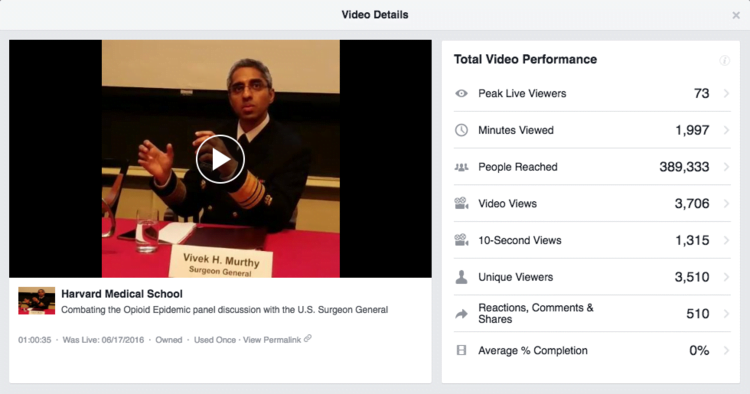
There’s a seemingly endless amount of update, features and new social channels popping up all the time – so many, in fact, that it can be hard to figure out what works best for your brand.
Oftentimes, innovation can serve as differentiation within your market, regardless of your brand placement, and experimentation is key to staying competitive in social media marketing. Many of these elements are the best forms of free and organic social marketing that exists as new channels are looking to grow and existing ones are trying to have new features gain traction.
When considering new features or channels, social media marketers need to stay agile, take small risks, and monitor performance. Additionally, they should understand:
- Which assumptions are being made
- Why they’re looking to do it
- What they believe their brand will get out of it based on past experience and measurement
When reviewing your results, it’s always important to ask why (even up to five times). Without asking why when looking at how a campaign performed, data can’t lead to change.
At Harvard Medical School, we’ve been applying this framework of experimentation when trying new features. Here’s what we’ve found.
Facebook Live
We’ve been looking for ways to provide more access to events at HMS, and also extend the reach of these assets beyond the HMS community. When Facebook announced it would open Live to the public, we saw it as an opportunity to meet these two goals.
Assumptions/Tests
With the greater attention placed on Facebook Live videos in the Facebook algorithm, we believed these videos would have a larger reach and viewership than traditional videos.
Unlike Periscope, Facebook Live only goes out directly to your followers, so we saw Live as a purely engagement-centered tactic, as opposed to an acquisition one.
In this case, the tests were pretty simple and centered around whether Live videos outperformed our video averages in these areas.
Results
Live videos actually had a 5% lower viewership than our regular videos. However, on average they had a 10x larger reach and 2x more engagement than regular videos.
Lessons
The main lesson that we took away from our tests was that we weren’t doing a good job of leveraging video capabilities to turn reach into viewership.
We also noticed that:
- An appetite exists for these types of streams in general.
- Behind-the-scenes footage and videos featuring HMS thought leaders perform better.
- Shorter streams (5-15 minutes) are more effective in keeping audiences engaged.
- Streams have to engage right away.
After analyzing the results, we’ve found that our audiences are hungry for video content that provides greater access to HMS, our community, and our experts that can’t be found anywhere else.
The format of Facebook Live video delivers a more real and approachable experience that audiences can connect with and feel a part of, as opposed to pre-produced videos that are less authentic.
We also found that, when streaming long events, it’s better to chop recordings into smaller segments in order to highlight the most engaging parts and not lose viewers.
What’s Next
Our next steps are to increase the quality and production value of the streams where we can. The initial returns have been strong, and we believe that by increasing the quality we can increase reach and retention, while leaving behind-the-scenes footage rather raw.
These results have also led us to believe that a series of interviews and one-on-ones with our experts would be well received and is an avenue worth pursuing.
360 Videos/Images
Continuing with the principle of greater access and connection, we’ve also experimented with 360 videos and images on Facebook.
Assumptions/Tests
The assumption we sought to test with 360 was whether it would create greater engagement, since people can interact with the images, providing deeper access into HMS.
Results
A 360 video of our Quad became our second most popular video ever (behind a Justin Bieber parody, naturally), and it was the video with the highest engagement rate.
Our 360 photos from around campus are also routinely amongst the content with the highest reach and engagement, with the 360 photo of the Countway Library becoming our most popular post ever.
These results actually outperformed our expectations and projections. Not only have they led to success on our own page, but they’ve contributed viralty by being shared by other accounts, which has led to a spike in followers, and which positions these images as an acquisition tactic.
Lessons
The lessons on the 360 media were pretty straightforward:
- They encourage and generate more reach and engagement than the average post.
- The novelty of 360 images/videos has not worn off or tapered (yet).
Similar to Facebook Live, we’ve seen that content that lets our audiences inside HMS and makes them feel part of the HMS community is highly desirable and effective.
This content is not only attractive to our audiences, but also to other organizations that continue to share it.
What’s Next
We’re making 360 photos a consistent feature on the HMS Facebook page by displaying a new location once a week, and we’re venturing beyond communal places around campus to areas that aren’t publicly available, like the inside of labs. We’re also exploring how to engage faculty and students using 360 video for interactive storytelling.
Snapchat Geofilters
Another feature we’ve been exploring is Snapchat Geofilters – we use these as a means to engage with our community and those on campus. We’ve set one filter to run permanently within our campus area, and we also run event-specific campaigns. Our goal is to delight students and visitors, while also attaching our brand to shared images for organic marketing.
Assumptions/Tests
We’ve only dipped our toe into Snapchat, so the assumption that we tested during Class Day (graduation) was that these would be used to build positive brand association.
The ultimate goal, though, is to have this tactic be part of every major event and be an aspect of each, one that people look for and look forward to engaging with.
Results
In our Class Day campaign, the filter ran for 9 hours with 184 uses, and the snaps were seen by 7,677 people for the cost of $212.70. This usage equates to $1.15 per use and $.03 per impression. Since this was the first use (and Snapchat doesn’t give metrics for the permanent geofilter), we don’t have anything to compare the results to.
Despite a lack of hard metrics, there was a very positive anecdotal and internal response, which, when combined with the usage, makes us believe that geofilters are a relatively cheap means for engagement.
Moving forward, we’ll be looking to see if usage increases with each event as awareness grows, and if we can grow reach while lowering the CPM.
Lessons
TBD, but there is a strong belief that there’s enthusiasm for the ability to customize the experience of being at HMS and/or an HMS event. This involvement also allows us to experiment and work out any kinks simultaneously as Snapchat continues to grow, evolve, and mature. New features like “memories” also point to filters having lives and usefulness beyond an event or visit, which adds value.
What’s Next
We’ll continue to experiment with Snapchat Geofilters at important student events throughout the year, such as White Coat Day and Class Day.
These use cases and tactics won’t be applicable across all organizations and verticals, but they have been beneficial for our needs.
[Source: Socialmediatoday]









